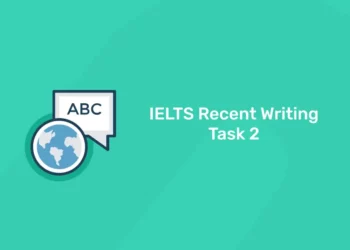Table of Contents
Want to increase your students’ focus, knowledge, and insight? These are the top benefits of bringing mindfulness into the classroom. Mindfulness in the classroom, also known as meditation pedagogy, aims to calm and change the mind’s behavior. Research shows that these thoughts can protect against the constant distractions and distractions of today’s work and social lives.
Creating a mindful classroom isn’t as difficult as you might think, and this teaching method can be effective in helping improve behavior in your classroom. Teaching with thought will change your classroom more than you think.
Unlock your passion for education and shape young minds as a Montessori teacher!
What is mindfulness?
Mindfulness is “essentially the human ability to be present, aware of where we are and what we are doing, and not be distracted or overwhelmed by what is happening around us.” It’s a development you can easily use in your classroom to combat the insecurities and heightened anxiety that today’s youth often display.
Strategies for Promoting Mindfulness in the Classroom
1: What is the primary focus of the first plane of development in the Montessori method?
In recent years, there has been a growing awareness of the importance of mental health and wellbeing in the classroom. One method gaining widespread interest is using mindfulness to reduce stress and improve mental health. Mindfulness activities such as deep breathing, meditation and yoga have been shown to have a positive impact on mental health, helping students manage stress and anxiety, improving vision and supporting general health. As a result, many teachers are now incorporating kindness into their classroom routines as a way of creating a supportive and engaging learning environment.
Meditation and Breathing Exercises
Meditation and breathing are two powerful tools that can help improve mindfulness in the classroom. Both of these practices can be used to improve memory and help students stay motivated in the classroom.
When integrated into the classroom routine, these apps can help students connect with their peers and teachers by creating a supportive and engaging learning experience.
Mindful Colouring
Through mindfulness training in the classroom, students develop valuable skills that will serve them throughout their lives. These skills include self-awareness, emotion regulation, and empathy, which can help students solve complex problems and build relationships with others.
As students study beautiful colors, they can focus on the present moment, the sensations in their bodies, and the tasks at hand. This can help them become more aware of their thoughts and emotions and learn to manage them better.
Creating safe and comfortable environments
Creating a safe and comfortable environment for students is crucial to promoting mindfulness in the classroom. When students feel safe and comfortable, they are more likely to enjoy learning and engage consciously.
Here are some ways to create a safe and comfortable classroom environment:
- Take the time to get to know your students and build relationships with them. Show interest in their lives and make them feel valued and respected.
- Create an environment where students feel comfortable sharing their thoughts and feelings. Encourage them to express themselves and to actively listen as they speak.
- Make sure classrooms are clean, tidy and free of distractions. Use calming colors and lighting to create a relaxing atmosphere.
- Patterns of consciousness for students through selfdirected learning. Take time each day to relax mindfully and incorporate kindness into your lessons.
Gratitude Journals
Creating a gratitude journal can be a useful tool for creating mindfulness in the classroom. A gratitude journal is a simple yet effective way to foster mindfulness and help students develop a positive mindset.
A gratitude journal should regularly list things you are grateful for. This practice can help students become more aware of the positive things in their lives and distract them from negative thoughts and feelings.
Begin each day by asking students to write down something they are grateful for. This can be done individually oras a group project. Also, set aside a week for students to write in their gratitude journals. Encourage them to write down the things they are grateful for and how they make them feel.
Mindful Eating
Healthy eating is the practice of focusing on food and eating without judgment or distraction. It involves perfection in cooking by using all your senses to observe the color, smell, texture, taste and even sound of the food.
Practicing healthy eating can help improve mindfulness in the classroom by increasing awareness, focus, and self-control. It can also help reduce stress, anxiety, and appetite, and promote health.
Listening Exercises
Listening lessons can be a powerful tool for promoting mindfulness in the classroom. They help students learn more about their environment and the people around them. By focusing on sound and voice, students can focus on the present moment and avoid being distracted by their own thoughts.
Additionally, listening will help students improve their listening skills. By practicing active listening, students can learn to cope with distractions and focus on the task at hand.
Conclusion
Kindness can have a huge impact on students’ well being and academic success. Through increased awareness, focus, and self regulation, mindfulness can help students develop important skills like thinking, communicating, and managing stress. Teachers can use many techniques and strategies to bring mindfulness into the classroom, including breathing, relaxation, gratitude, and listening. It’s important to remember that mindfulness is a skill that requires practice and patience, and it takes time to see results.
Unlock your passion for education and shape young minds as a Montessori teacher!
| Montessori Teacher’s Training in Different Cities |
| Montessori Teacher Training Course in Trivandrum |
| Montessori Teacher Training Course in Kollam |
| Montessori Teacher Training Course in Kochi, Ernakulam |
| Montessori Teacher Training Course in Calicut |











